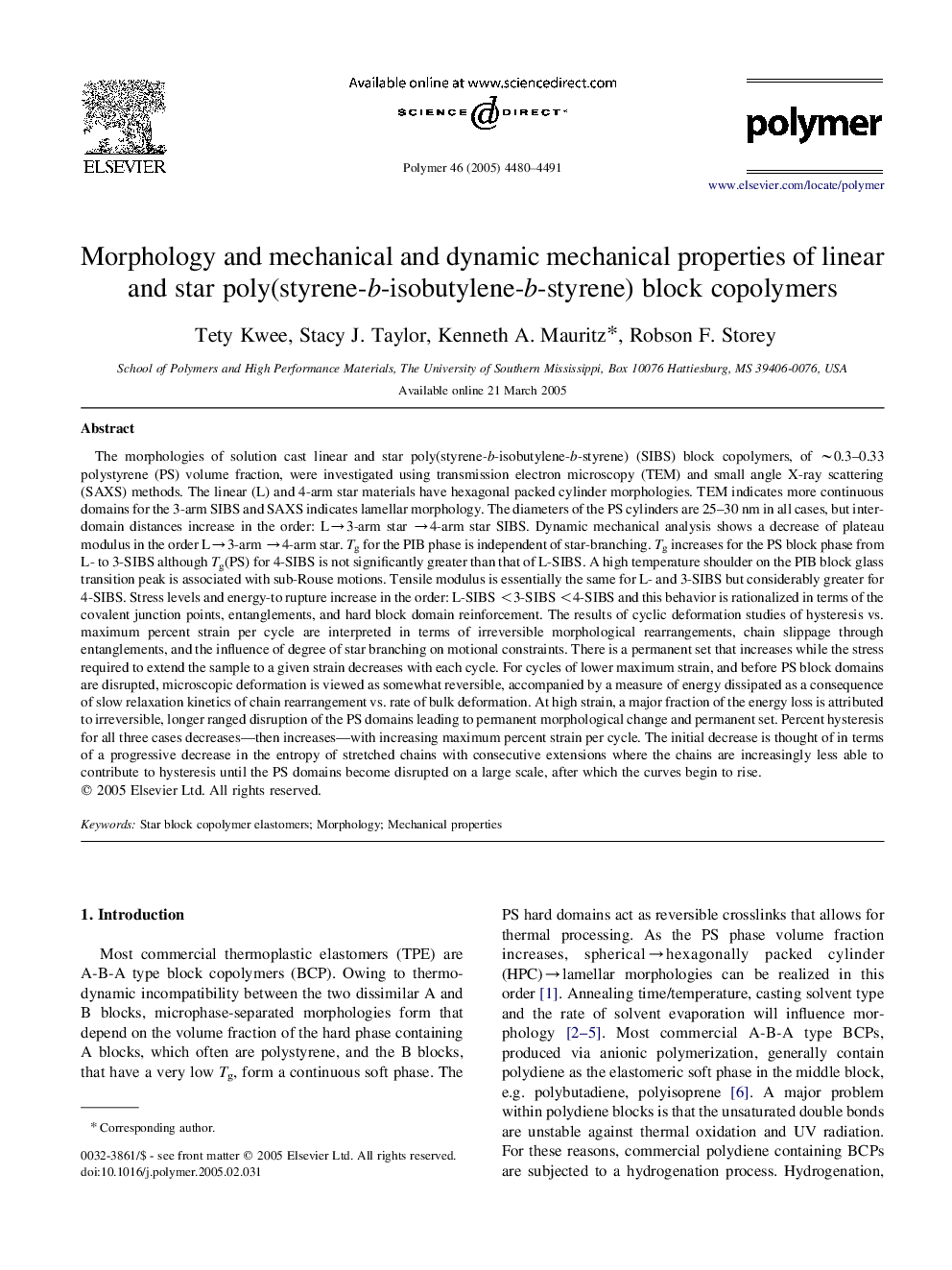| کد مقاله | کد نشریه | سال انتشار | مقاله انگلیسی | نسخه تمام متن |
|---|---|---|---|---|
| 5191902 | 1381242 | 2005 | 12 صفحه PDF | دانلود رایگان |

The morphologies of solution cast linear and star poly(styrene-b-isobutylene-b-styrene) (SIBS) block copolymers, of â¼0.3-0.33 polystyrene (PS) volume fraction, were investigated using transmission electron microscopy (TEM) and small angle X-ray scattering (SAXS) methods. The linear (L) and 4-arm star materials have hexagonal packed cylinder morphologies. TEM indicates more continuous domains for the 3-arm SIBS and SAXS indicates lamellar morphology. The diameters of the PS cylinders are 25-30Â nm in all cases, but inter-domain distances increase in the order: Lâ3-arm star â4-arm star SIBS. Dynamic mechanical analysis shows a decrease of plateau modulus in the order Lâ3-arm â4-arm star. Tg for the PIB phase is independent of star-branching. Tg increases for the PS block phase from L- to 3-SIBS although Tg(PS) for 4-SIBS is not significantly greater than that of L-SIBS. A high temperature shoulder on the PIB block glass transition peak is associated with sub-Rouse motions. Tensile modulus is essentially the same for L- and 3-SIBS but considerably greater for 4-SIBS. Stress levels and energy-to rupture increase in the order: L-SIBS <3-SIBS <4-SIBS and this behavior is rationalized in terms of the covalent junction points, entanglements, and hard block domain reinforcement. The results of cyclic deformation studies of hysteresis vs. maximum percent strain per cycle are interpreted in terms of irreversible morphological rearrangements, chain slippage through entanglements, and the influence of degree of star branching on motional constraints. There is a permanent set that increases while the stress required to extend the sample to a given strain decreases with each cycle. For cycles of lower maximum strain, and before PS block domains are disrupted, microscopic deformation is viewed as somewhat reversible, accompanied by a measure of energy dissipated as a consequence of slow relaxation kinetics of chain rearrangement vs. rate of bulk deformation. At high strain, a major fraction of the energy loss is attributed to irreversible, longer ranged disruption of the PS domains leading to permanent morphological change and permanent set. Percent hysteresis for all three cases decreases-then increases-with increasing maximum percent strain per cycle. The initial decrease is thought of in terms of a progressive decrease in the entropy of stretched chains with consecutive extensions where the chains are increasingly less able to contribute to hysteresis until the PS domains become disrupted on a large scale, after which the curves begin to rise.
Journal: Polymer - Volume 46, Issue 12, 26 May 2005, Pages 4480-4491